Interested in using the subscription service business model but not sure where to begin?
This post will teach you everything that you need to know about this popular revenue model.
We’ll start by defining what the subscription service model is and explaining some of the different ways that you can implement it.
Then, we’ll share some real-world examples of companies implementing this model, covering a range of different implementations and business sizes. We’ll also cover the advantages of the model, which helps explain why these real-world businesses are so successful.
Finally, we’ll finish with some tips on the technical aspects of setting up a subscription service using WordPress, the most popular way to make a business website, and the Paid Member Subscriptions plugin. This will give you an affordable and non-technical way to launch your own subscription business.
Let’s dig in!
What Is the Subscription Service Business Model?
The subscription service business model is a business model where customers automatically pay a recurring fee in exchange for your products or services. They could pay this fee on a weekly, monthly, or annual basis depending on your approach.
Netflix is probably the most well-known example of the subscription business model. You sign up and pay your monthly fee to Netflix. And in exchange, you get access to a bunch of media content at no extra cost beyond your subscription.
The subscription model can have benefits for both customers and businesses, which we’ll discuss in more detail later in the post.
Customers can pay a predictable fee each month without needing to continue making manual payments. This lets them know exactly how much they’ll pay each month and saves them from unnecessary work.
Businesses can build a more stable and predictable revenue stream. These types of revenue streams are typically called monthly recurring revenue (MRR) or annual recurring revenue (ARR), depending on the business’s subscription period. Plus, there are other business benefits, too.
The subscription service business model also scales very well. It can work for individual solopreneurs and service providers all the way up to large publicly traded companies.
Different Types of Subscription Revenue Models
There are a lot of different ways that you can implement the subscription revenue model, but you can boil most of them down to four main approaches:
- Content – you can offer unique content that people are willing to pay for. This could be video (e.g. Netflix), audio, text content, courses, and so on. Most membership websites operate as a content-based subscription model.
- Software/apps – known as software-as-a-service (SaaS), this is one of the most common subscription models. People will happily pay a monthly or annual fee in order to be able to use your software or app.
- Physical products – you can ship people physical products every billing period. This could be the same product each month (e.g. shipping someone X bags of coffee each month) or it could be a changing selection of products (e.g. a “wine of the month” club). We have a whole post explaining the subscription box model.
- Services – you can offer services to customers on a fixed subscription basis, rather than on a per-project model. This is similar to a retainer, and you’ll see it with all different kinds of services including design, writing, physical labor (e.g. grass cutting), and so on. It also works great for coaching businesses.
Examples of Successful Subscription Businesses
To help you more thoroughly understand the subscription model, let’s take a look at some real-world examples of companies using this model.
We’ll try to cover a range of different subscription types, including services, products, content, software, and other types of subscriptions.
As we mentioned earlier, the subscription model is also quite scalable. You can find successful implementations of the subscription business model at all different levels, from large public companies to individual solopreneurs (and everything in between).
For that reason, we’ll also try to highlight both large and small businesses to further add to the diversity of our examples.
Designjoy – Graphic Design as a Subscription Service
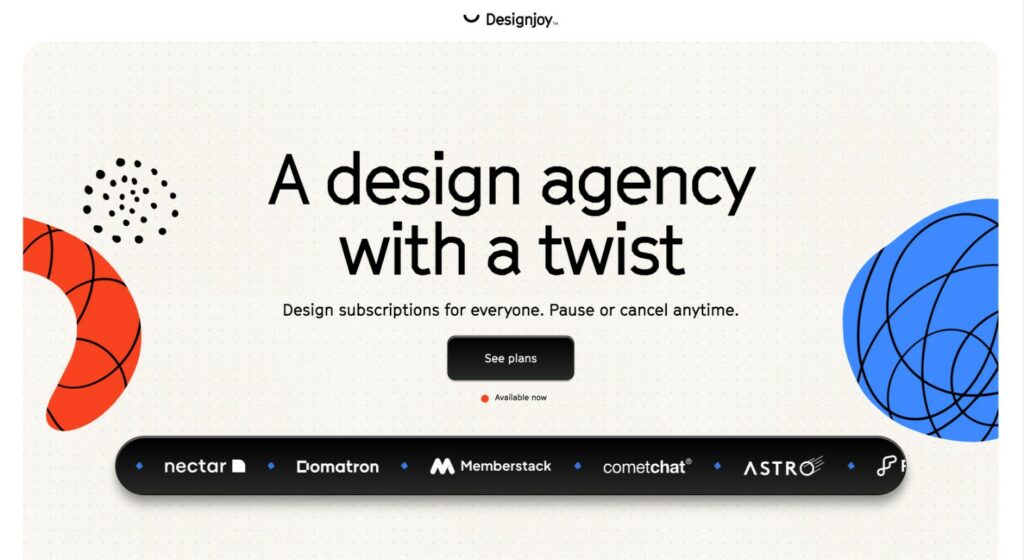
Designjoy is a really interesting example of the subscription model because it offers a service, rather than software or content.
It’s also targeted more at businesses, which is another unique aspect as a lot of subscription-based businesses target individuals.
In a nutshell, subscribers who are willing to pay the hefty $4,995 per month subscription fee get access to unlimited graphic design work, which they can use for logos, website designs, graphics, and more. The “catch” is that businesses can only have one active design request at a time.
According to the founder’s Twitter profile, Designjoy currently makes over $120,000 in monthly recurring revenue (MRR), which isn’t too shabby!
Overall, it’s a great example of how you can “productize” a service that you’re skilled at to turn it into an opportunity for recurring subscription revenue.
Narwhal – A Subscription-Only iOS App for Reddit
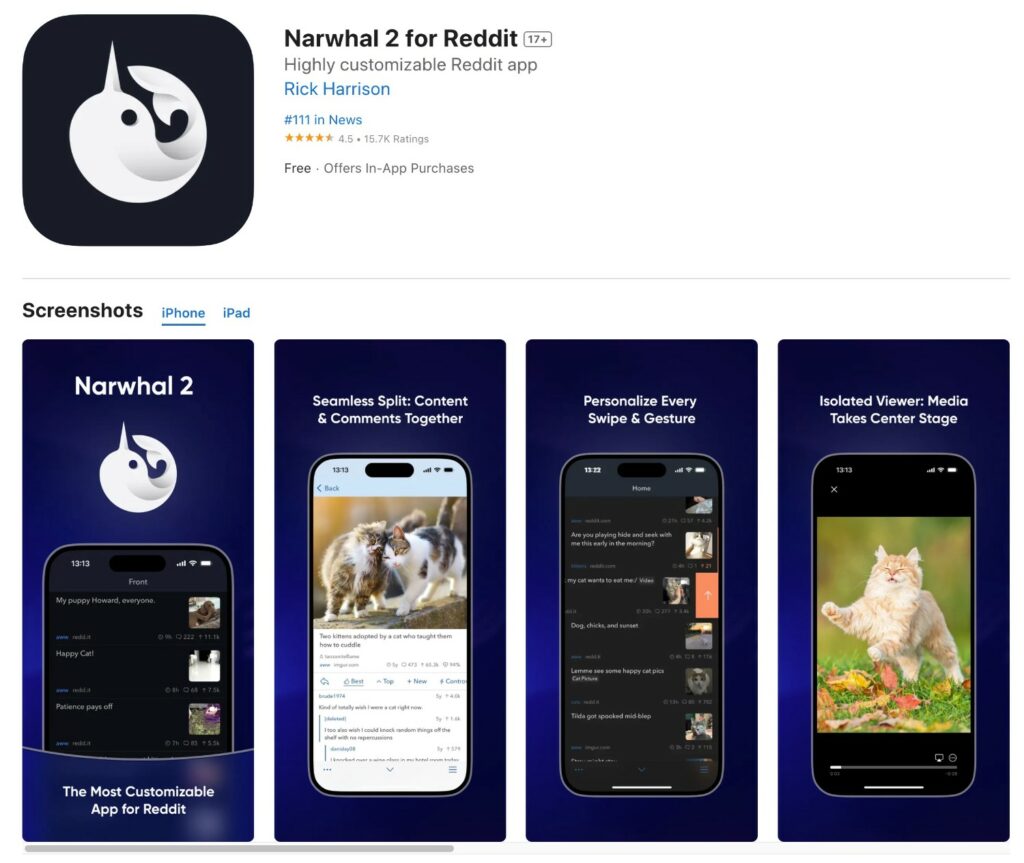
Narwhal is an iOS app that people can use to browse and interact with Reddit, the popular social forum community. It uses a B2C-focused SaaS model that charges subscribers $3.99 per month in order to use the app.
What makes Narwhal especially interesting is that Reddit already offers its own free app that people can use. When Reddit started charging more for its API (which killed a lot of other third-party Reddit apps), Narwhal switched to the recurring subscription model in order to cover the API costs, while still being able to earn the developer money.
Overall, Narwhal is a great example of how you can build a subscription software business even for simpler things, such as an improved experience for browsing Reddit.
ButcherBox – A Physical Meat Delivery Subscription
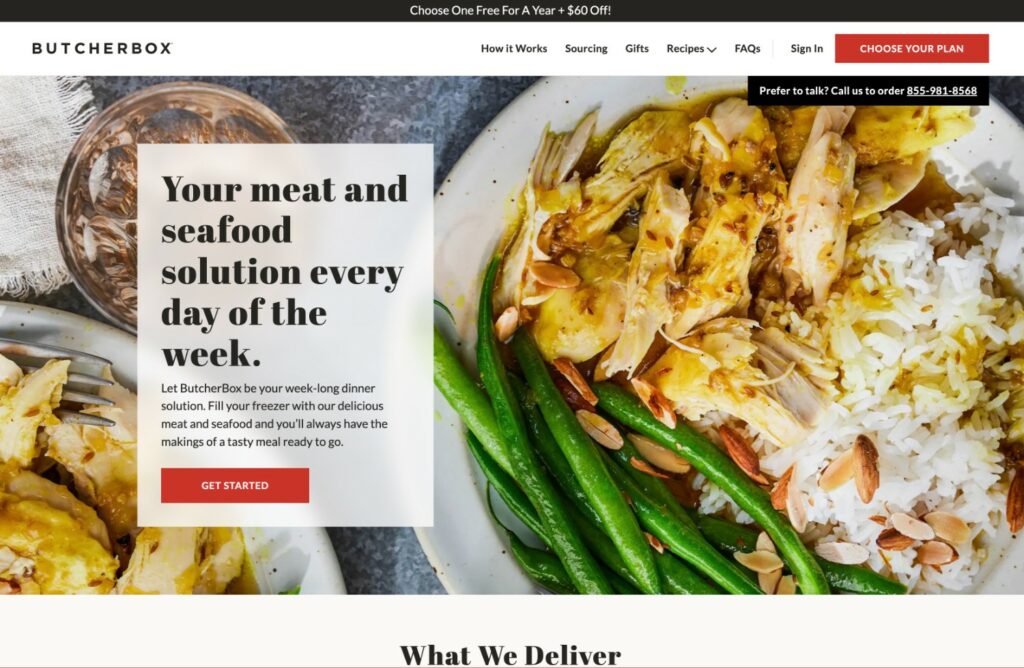
If you listen to podcasts, you’ve probably heard of ButcherBox, as it’s a regular sponsor of many shows.
In a nutshell, ButcherBox offers meat delivery on a subscription basis. People can subscribe to a custom plan with the meats of their own choice or a curated plan where ButcherBox picks the meat for them.
They can then receive these boxes on different subscription schedules, ranging from every two weeks to every two months.
I love this example because “meat” is probably the last thing you’d think of when it comes to a physical product subscription. But you’d be surprised – in 2023, ButcherBox was doing over $600 million in annual subscription revenue (up from $225 million in 2019).
Basically – if you can ship it (and there’s an audience for it), you can probably build a subscription business around it.
TennisTV – A Subscription for All ATP Tennis Content

We already discussed one of the biggest media subscription businesses above (Netflix), but you can find tons of smaller examples of successful media-based subscription businesses.
For example, TennisTV gives tennis fans access to live streams of every single ATP tournament, along with replays and other content.
Avid tennis fans can get access to all the different types of content for one flat membership fee. There’s also limited free access to some content, which helps to upgrade users to paid subscriptions.
Food Blogger Pro – A Subscription-Only Membership Website
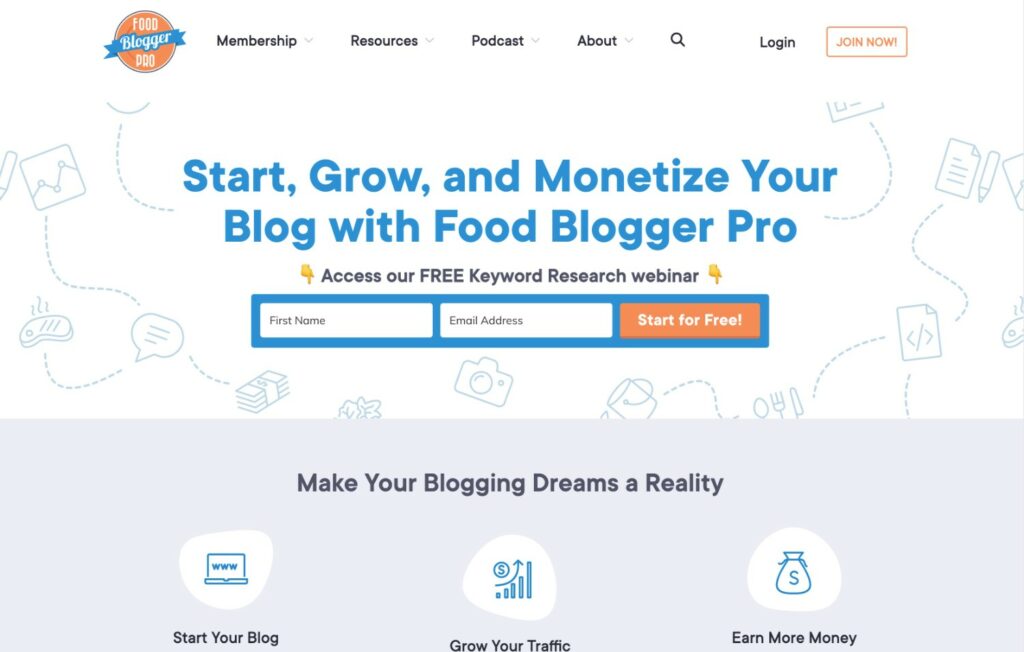
Food Blogger Pro is a membership site that targets people who want to create their own successful food blogs.
When it comes to online subscription models that are accessible to individuals or small businesses, creating a membership website is one of the most common strategies to go with.
Aspiring food bloggers can subscribe to the site on an annual or quarterly basis. And for their subscription, they’ll get access to course content, a private community, coaching calls, and more.
If you’re interested, we have an entire post with more membership website examples.
TranslatePress – A WordPress Translation Plugin With a Subscription Option
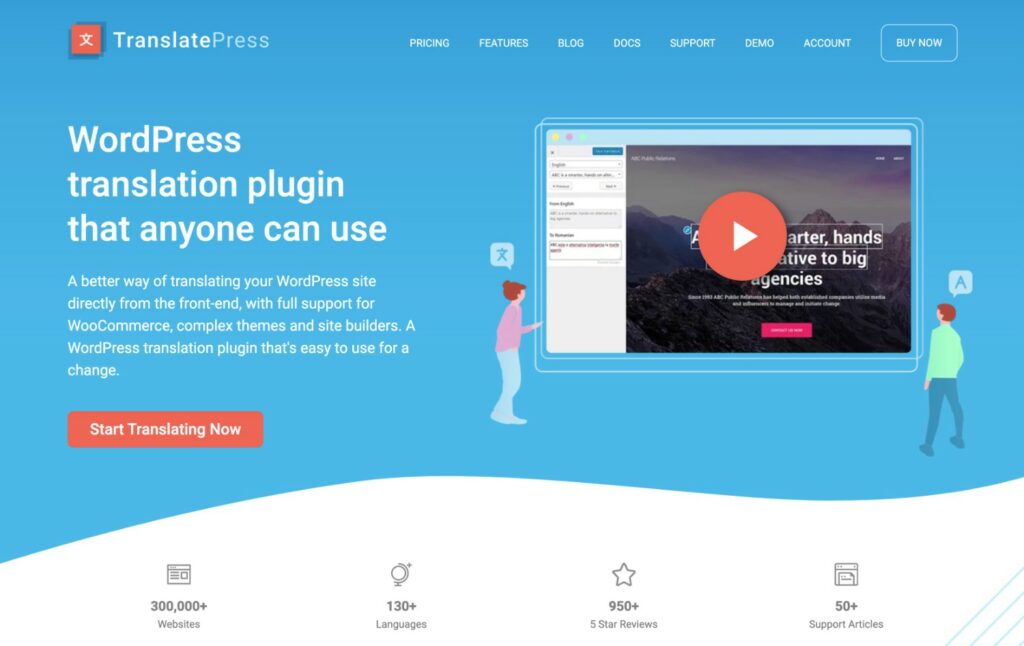
TranslatePress is an open-source WordPress translation plugin that helps people easily translate their WordPress websites.
After the initial purchase of TranslatePress, TranslatePress uses a recurring subscription model to allow customers to continue receiving support and updates.
One unique thing about this approach is that users can still continue to use the plugin even if they stop paying their subscription. However, they’ll stop receiving support and updates without an active subscription.
This shows you how you can still implement the recurring revenue model even if you’re selling open-source software.
Advantages of the Subscription Service Business Model
According to the Subscription Economy Index, businesses that use the subscription service model generally grow faster than those that don’t.
For example, public companies in the Subscription Economy Index have grown 3.7X faster than other public companies in the S&P 500 index from 2012-2023.
So – why is that happening? Let’s discuss some of the key advantages of the subscription model:
- Predictable recurring revenue
- Improved customer loyalty
- Higher customer lifetime value
- Reduced customer acquisition costs over the long term
- Convenience for customers
Predictable Recurring Revenue
One of the biggest advantages of the subscription model is that you have much more predictable revenue.
Without the subscription model, your monthly revenue will always depend on your ability to bring in new sales. If you have a bad month, your revenue could be drastically lower than the previous one.
But with the subscription model, you’ll know pretty much exactly how much money will be coming in.
Sure – some customers will stop their subscriptions (called “churn”, an important subscription metric), but this number should be low for quality subscription businesses. And even then, you’ll usually have a good idea of your business’s churn rate, which will still let you reliably predict revenue.
Improved Customer Loyalty
With the subscription model, you’re able to more easily build a long-term relationship with your customers, which can improve your customer loyalty and decrease the chances of them switching to another brand.
If a customer needs to think about their purchase decision every single month, they could be more likely to try a different company. But when the subscription is on autopilot, they don’t need to debate their decision each month.
You can also get to know your customers at a deeper level, especially for more service-focused businesses. This lets you build a connection that would be harder to create with one-time purchasers.
Higher Customer Lifetime Value
In general, customers who subscribe to your business will almost always have a higher customer lifetime value (CLV) than customers who make occasional one-time purchases.
This is one of the biggest reasons why businesses like the subscription model, as it lets you generate more revenue over the long term.
You can even have lower upfront prices while still generating more long-term value. For example, a customer who pays $9 per month for a year is worth a lot more than a customer who pays $49 one time.
Reduced Customer Acquisition Costs
While the initial cost to acquire a subscription customer can still be high in some industries, the advantage of the subscription business model is that you only need to acquire that customer a single time.
With the one-time purchase model, you’ll often need to spend money to acquire each sale, even if those sales are coming from the same person. But when you have a subscriber, every payment after the first one is essentially “free”.
Convenience for Customers
While you will find some customers having a bit of “subscription fatigue” because so many businesses have moved to the subscription model, the subscription approach also has some benefits when it comes to simplifying things for your customers.
First off, customers will know exactly what their costs will be each billing period. With one-time purchases, their costs can vary each month. However, most subscriptions have a fixed cost regardless of usage, which means that customers can better plan their expenses.
Second, the subscription model eliminates the need for customers to manually pay each month, which takes a task off their to-do lists. Once they set up automatic billing one time, subsequent payments will happen without any effort on their parts.
The subscription model can also be especially convenient for physical products. For example, if someone signs up for a razor blade subscription, that customer knows they will always have a fresh razor blade when they need one.
Tips for Setting Up a Subscription Service With WordPress
If you’re interested in setting up a subscription service business, one of the easiest ways to get started online is with the WordPress software.
If you’re not familiar with WordPress, it’s by far the most popular way to make a website, powering well over 40% of all websites on the internet.
While WordPress itself doesn’t include a subscription feature, you can easily add this functionality with the freemium Paid Member Subscriptions plugin.
The Paid Member Subscriptions plugin adds subscription management and payment functionality to your site, along with lots of other features that can help you implement the subscription business model.
You can easily set up unlimited subscription plans using a simple interface. You can also link these plans together in hierarchical relationships so that your customers can seamlessly upgrade or downgrade between different plan tiers.
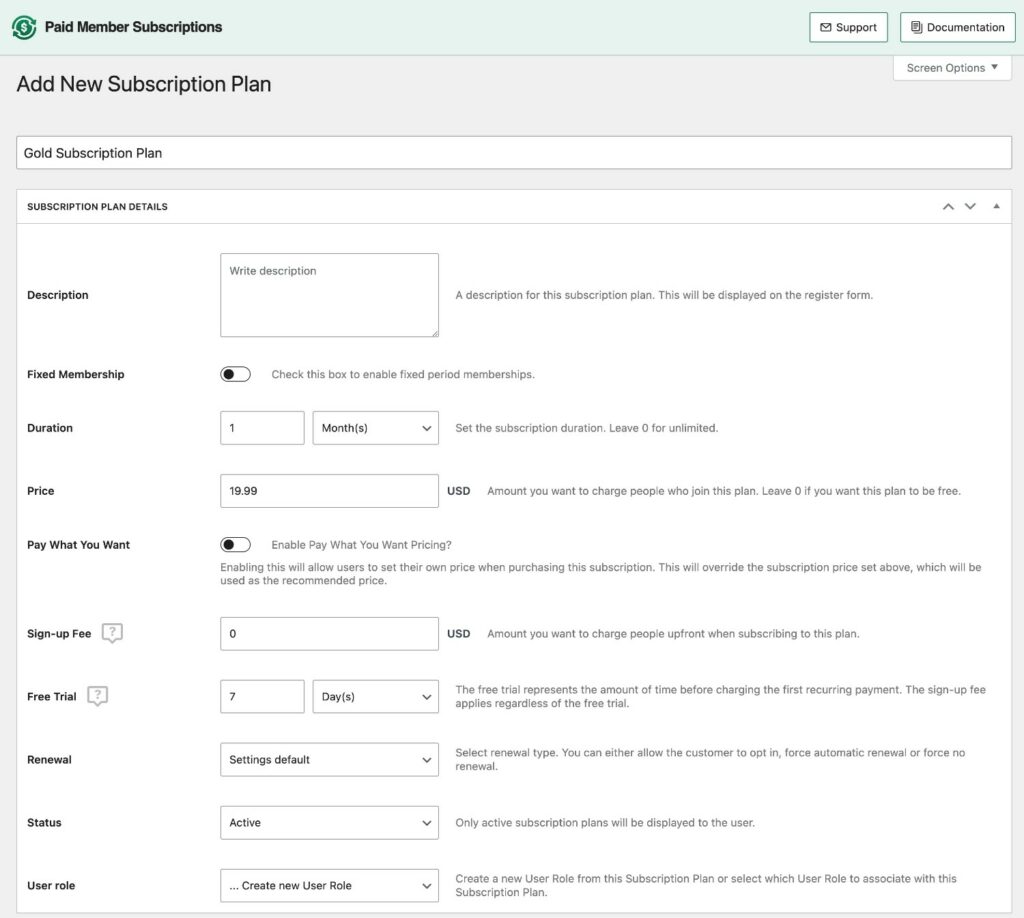
To accept recurring payments, you can use PayPal or Stripe according to your preferences, both of which let you set up automatic recurring subscriptions so that customers won’t need to manually pay each month.
You can also customize your subscription payments with adjustments like free trials and one-time signup fees.
If your subscription business model relies on delivering content to paying subscribers, Paid Member Subscriptions also includes features to help you restrict access to your site’s content based on a user’s subscription.
This makes it easy to create membership websites, subscription communities, online courses, and other types of subscription businesses.
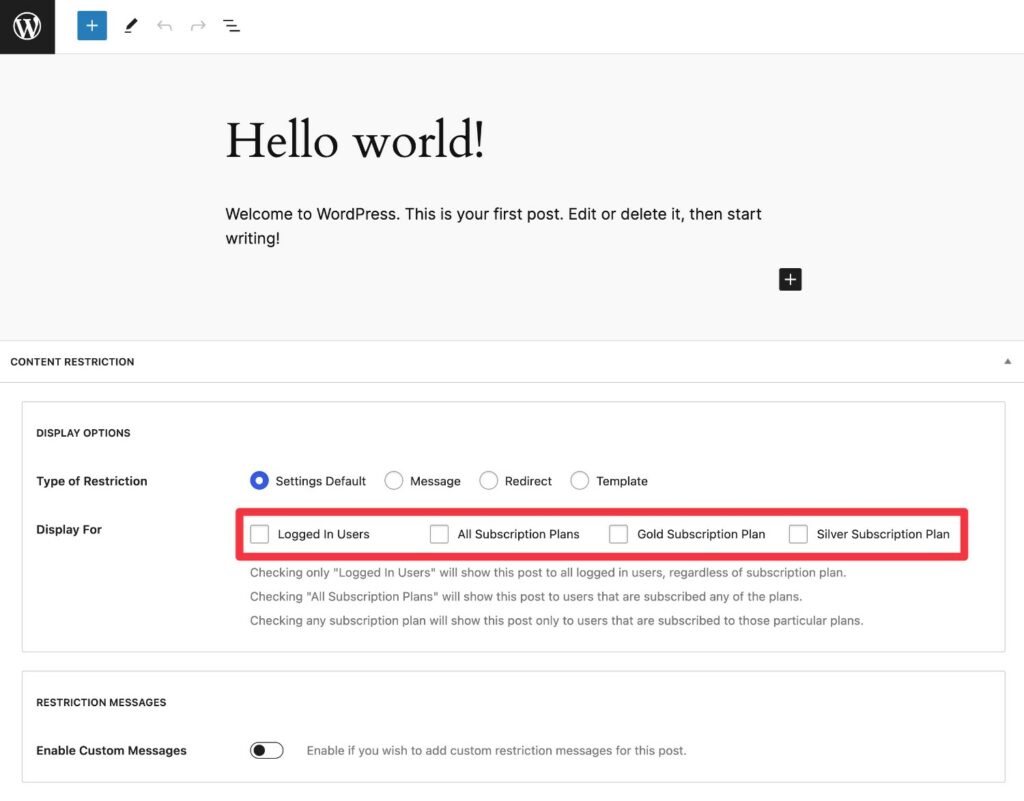
Paid Member Subscriptions Pro
The best WordPress plugin for setting up a subscription service business using WordPress
If you want a full step-by-step guide to setting up a subscription service with Paid Member Subscriptions and WordPress, you can check out our guides on how to build a subscription website and how to set up a membership website.
Once you’ve set up your site, we also have a post on how to maximize your subscription revenue.
Try the Recurring Subscription Business Model for Your Next Project
To sum things up, the subscription service business model has grown in popularity because it just flat-out works.
Setting up a subscription service lets you build the Holy Grail of successful businesses – automatic recurring revenue. Plus, it will usually lead to increased customer lifetime value and decreased long-term customer acquisition costs.
You can also apply the recurring revenue model in all different types of businesses, including software, physical or digital products, content, services, communities, coaching, and more.
If you want to try the subscription model on WordPress, you can use the Paid Member Subscriptions plugin.
Paid Member Subscriptions is very flexible and can do well for content subscriptions (membership sites, courses, communities, etc), services, and even some physical or digital products, such as a subscription box.
You can get started with the free version of Paid Member Subscriptions and then upgrade to the premium version later on to unlock lots of new features.
Paid Member Subscriptions Pro
The best WordPress plugin for setting up a subscription service business using WordPress
Do you still have any questions about the subscription service business model or how to implement it for your business? Ask away in the comments section!
Source: https://www.cozmoslabs.com/2961202-subscription-service-business-model/

